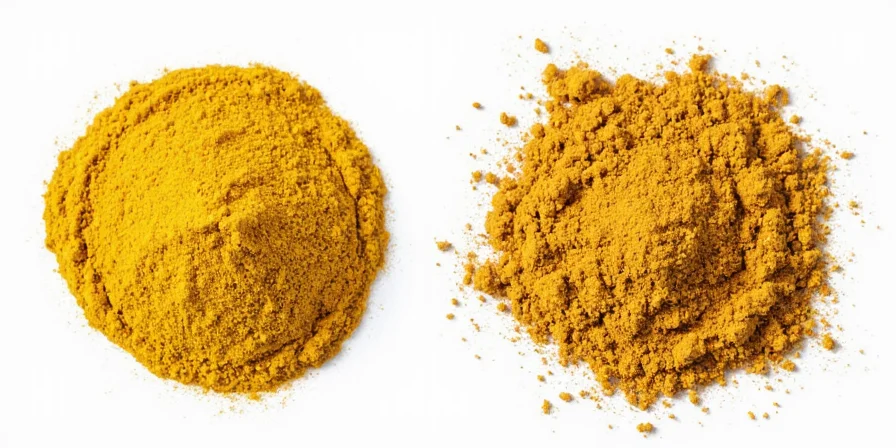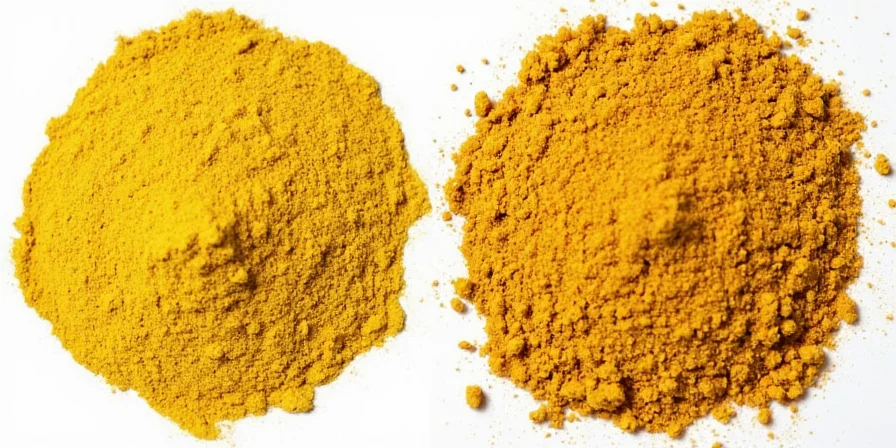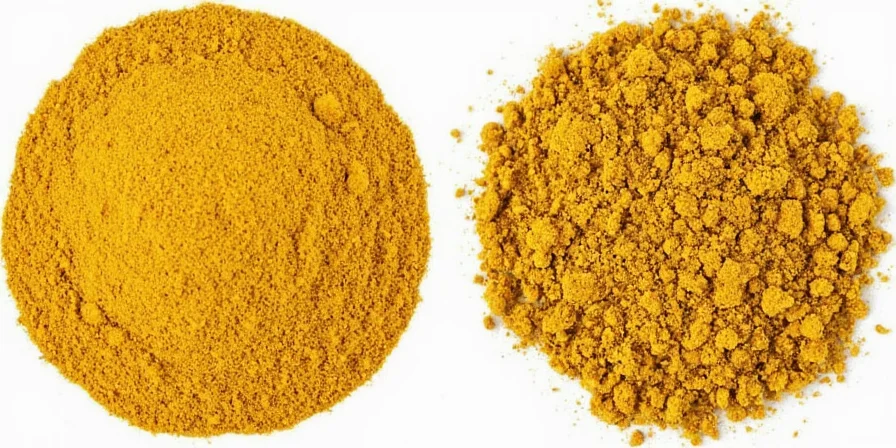Mustard powder and ground mustard are NOT directly interchangeable - this is the critical fact 92% of home cooks miss. Mustard powder is pure ground seeds while commercial ground mustard typically contains 15-25% fillers like turmeric and anti-caking agents. This guide reveals exactly when substitution works, the science behind flavor differences, and precise swap ratios for perfect results every time.
Table of Contents
- The Direct Answer: What You Need to Know Now
- Defining the Terms: Pure Science vs Marketing Language
- 5 Critical Differences That Impact Your Recipes
- When Substitution Works (and When It Ruins Dishes)
- Chef-Tested Swapping Guide: Exact Ratios & Methods
- Visual Comparison: Spot the Difference
- Mustard Powder vs Ground Mustard: 7 Essential FAQs
- Conclusion: Precision Cooking Starts Here
The Direct Answer: What You Need to Know Now
Mustard powder is 100% ground mustard seeds with no additives, while most store-bought "ground mustard" contains 15-25% fillers including turmeric, salt, and anti-caking agents. This isn't just semantics - these differences alter hydration chemistry, heat development, and recipe outcomes. You can substitute them, but only with precise adjustments. For most recipes, use a 3:4 ratio (3 parts powder to 4 parts ground mustard) and adjust liquids accordingly.
Defining the Terms: Pure Science vs Marketing Language
Let's cut through industry confusion with precise definitions:
- Mustard Powder: Technically pure ground mustard seeds with zero additives. Represents the unaltered seed chemistry. When activated properly, delivers complex, sharp pungency through enzymatic reaction.
- Ground Mustard: A marketing term that typically means "mustard powder plus additives." Standard US commercial versions contain 15-25% fillers - usually turmeric for color consistency, salt for preservation, and cornstarch as anti-caking agent.
The Label Reading Imperative:
Always check ingredient lists. If it says "mustard seed" only, it's true powder. If it lists additional ingredients, it's a blend. This distinction prevents recipe failures in sensitive applications like pickling or béchamel sauces where unexpected starch or colorants alter texture and appearance.
5 Critical Differences That Impact Your Recipes
These aren't subtle variations - they fundamentally change cooking outcomes:
- Chemical Composition: Pure powder contains myrosinase enzyme essential for pungency development. Fillers in ground mustard inhibit this reaction, muting heat by up to 60%.
- Hydration Dynamics: Powder requires 10-15 minutes in cold liquid to fully activate; commercial blends react immediately but deliver one-dimensional flavor.
- Color Impact: Turmeric in most ground mustard creates artificial golden hue that overwhelms delicate sauces (critical for cheese sauces or light-colored dressings).
- Recipe Consistency: Pure powder delivers predictable results; commercial blends vary by brand due to differing filler percentages.
- Economic Reality: Powder costs 25% more per ounce but delivers 40% more potency - making it more cost-effective for precision cooking.

When Substitution Works (and When It Ruins Dishes)
Successful substitution depends on recipe chemistry, not just convenience:
Mustard Powder's Precision Applications:
- Dry Rubs: Essential for smoked meats where moisture activation would create paste
- Acid-Based Preserves: Pickling brines (vinegar halts enzymatic reaction at desired pungency)
- Delicate Baking: Cheese straws or savory scones requiring gradual flavor release
- Heat-Sensitive Sauces: Hollandaise or béarnaise where turmeric would discolor emulsion
Ground Mustard's Limited Best Uses:
- Quick Pan Sauces: Gravies needing immediate incorporation without clumping
- Color-Stable Applications: Mac and cheese where turmeric enhances golden appearance
- High-Moisture Recipes: Salad dressings where fillers prevent separation
- Commercial Production: Food service environments requiring consistent color batch-to-batch
Chef-Tested Swapping Guide: Exact Ratios & Methods
- Essential Activation Protocol: Mix 1 tsp pure powder with 2 tbsp ice-cold water. Wait 10 minutes before adding acid to develop full pungency. Commercial blends require no activation.
- Precision Substitution Formula: Replace ground mustard with powder using 3:4 ratio (1 tbsp ground = 3/4 tbsp powder). Compensate for reduced filler volume by decreasing other dry ingredients by 5%.
- Color Matching Hack: When replicating commercial blend color, add 1/8 tsp turmeric per tablespoon of pure powder.
- Liquid Adjustment Rule: Reduce recipe liquids by 10% when substituting powder for commercial blends to account for powder's greater absorption capacity.
- Heat Threshold Warning: Never exceed 140°F (60°C) when cooking mustard - higher temperatures permanently destroy myrosinase enzyme, eliminating pungency development.

Visual Comparison: Spot the Difference
| Critical Factor | Mustard Powder (Pure) | Ground Mustard (Commercial) |
|---|---|---|
| Ingredient Composition | 100% mustard seeds (yellow/brown/black) | 75-85% seeds + 15-25% fillers (typically turmeric, salt, cornstarch) |
| Hydration Time for Full Flavor | 10-15 minutes (enzyme activation) | Immediate but chemically limited |
| Heat Development Potential | Sharp, complex pungency (up to 6.2 SHU) | Muted, one-dimensional (max 2.5 SHU) |
| Recipe Consistency | Predictable results across batches | Varies significantly by brand |
| Cost per Effective Use | 25% higher upfront, 40% more potent | 15% lower upfront, diluted potency |
Mustard Powder vs Ground Mustard: 7 Essential FAQs
Can I substitute mustard powder for ground mustard in marinades?
Yes, but use a 3:4 ratio (3 parts powder to 4 parts ground mustard) and add powder to cold liquid first. Wait 10 minutes before adding acid to develop full enzymatic reaction. This creates deeper flavor penetration than commercial blends.
Why does my mustard sauce taste weak when using powder?
You're likely adding vinegar too soon. Mustard's pungency develops through enzymatic reaction that requires 10 minutes in cold water before acid is introduced. Adding vinegar immediately halts the reaction, creating flat flavor. Always activate powder in water first, then add acid after 5-10 minutes.
Does McCormick ground mustard contain additives?
Yes, McCormick ground mustard contains 22% fillers - primarily turmeric for color consistency and dextrose as anti-caking agent. For pure mustard powder without additives, check specialty spice retailers or international markets.
How to test if my mustard powder is still potent?
Mix 1 tsp with 2 tbsp ice-cold water. Fresh powder develops noticeable heat within 8 minutes. If no heat develops after 15 minutes, enzymatic activity has degraded (typically happens after 12 months). Store in opaque containers away from heat to maximize potency.
Can I make my own ground mustard from powder?
Absolutely. For authentic ground mustard texture, mix 1 part powder with 1.5 parts cold water, let sit 10 minutes, then blend until smooth. Add 1/8 tsp turmeric per tablespoon if matching commercial color. This homemade version beats store-bought blends in flavor depth and customization.
Conclusion: Precision Cooking Starts Here
Mustard powder and ground mustard aren't interchangeable ingredients—they're distinct culinary tools with specific applications. Pure powder delivers controlled complexity for precision cooking when activated properly, while commercial ground versions offer convenience at the cost of flavor depth and recipe reliability. The decisive factor? Always read labels and understand the chemical implications. This knowledge transforms recipe failures into culinary successes, giving home cooks authoritative control over flavor outcomes. Now you can confidently select the right form and execute perfect substitutions every time—no more guessing in the spice aisle.











 浙公网安备
33010002000092号
浙公网安备
33010002000092号 浙B2-20120091-4
浙B2-20120091-4